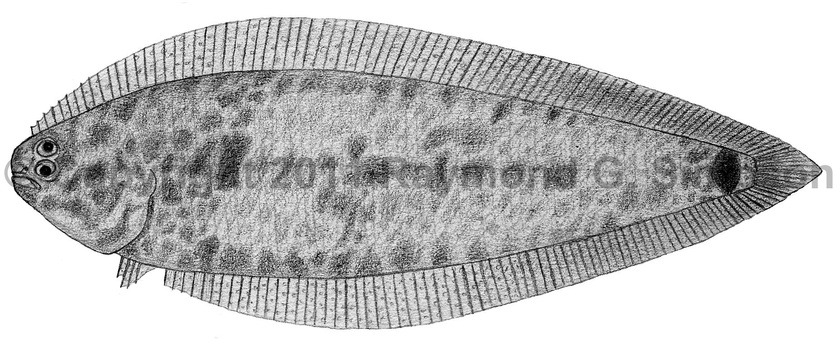
Common Name
Brazilian Tonguefish
Year Described
Menezes and Benvegnú, 1976
Identification
Dorsal Fin Rays: 80-87
Anal Fin Rays: 67-72
Pectoral Fin Rays: none
Pelvic Fin Rays: 4
Caudal Fin Rays: 10, rarely 11
Longitudinal Scale Rows: 73-81
Vertebrae: 46-49
Pterygiophore pattern (1st three interneural spaces): usually 1-4-2, rarely 1-3-3
Other diagnostic characters include: well developed pupillary operculum, membrane ostia present, no scales on blind side dorsal/anal rays, teeth on anterior 3/4 (occasionally entire side) of ocular side jaw, 4 hypurals, transverse scales 36-39, and 16-18 post-orbital scales (Munroe, 1998).
Color
Light brown with indistinct mottling. Peritoneum and opercular area not darkened. A dark blotch at the caudal fin base. Fins generally with indistinct mottling/spotting but pigment becomes darker towards posterior end of body (rays darker than membranes). Blind side unmarked and pale.
Size
74-120mm for mature specimens
Habitat
Inner continental shelf (36-69 m.) over mud bottom.
Range Map

Range
Southeastern Brazil (Rio de Janeiro to Rio Grande do Sul)
References
Munroe, T.A. 1998. Systematics and ecology of western Atlantic tonguefishes (Symphurus: Cynoglossidae: Pleuronectiformes). Fish. Bull. 96(1):1-182.